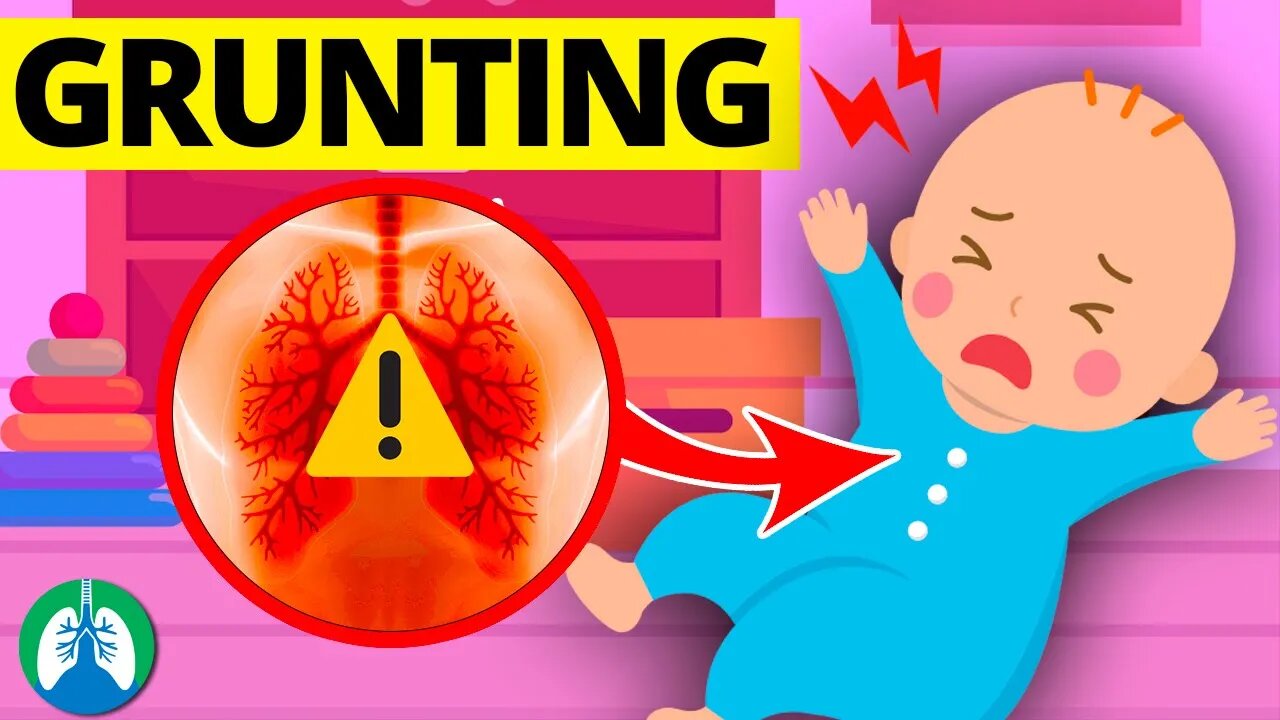Premium Only Content

Infant Grunting (Respiratory Distress) | Medical Overview
What is infant grunting? Is it a sign of respiratory distress? Watch this quick video for a medical overview of this topic!
💥Expiratory Grunting [Full Guide] ➜ ➜ ➜ http://bit.ly/3XrZNau
💥Respiratory Therapy Definitions [Glossary] ➜ ➜ ➜ https://bit.ly/3g6s4Pj
➡️ Causes
As previously mentioned, infant grunting can be caused by various factors, including infection, anatomical abnormalities, and even normal development. One of the most common causes is a condition known as transient tachypnea of the newborn, or TTN. This occurs when a baby's lungs are not able to clear fluid as quickly as they should after birth. This can lead to difficulty breathing and a characteristic grunting noise. Another common cause of infant grunting is a lower respiratory tract infection, such as pneumonia or bronchiolitis. These conditions can cause inflammation and mucus buildup in the lungs, making it difficult for the infant to breathe.
In some cases, grunting may also be a sign of a more serious condition, such as a congenital diaphragmatic hernia. This is a birth defect in which the diaphragm does not form properly, allowing organs from the abdomen to push into the thoracic cavity and restrict lung growth.
➡️ Sign and Symptoms
Recognizing the signs of infant grunting can be challenging, as the noise can be difficult to hear and may not always be present. However, some common signs to look for include:
- Rapid breathing
- Difficulty breathing
- Flaring nostrils
- Chest retractions
- Cyanosis
If you suspect that your baby is grunting or experiencing difficulty breathing, it is important to seek medical attention right away. The doctor will be able to perform a thorough examination and determine the cause of respiratory distress.
➡️ Treatment
Treatment for grunting will depend on the underlying cause, but some examples include:
- Nasal CPAP therapy
- Antibiotics for infection
- Exogenous surfactant
- Oxygen therapy for hypoxemia
- Surgery for congenital diaphragmatic hernia
Expiratory grunting is also one of the factors that determine an infant's Silverman-Anderson Index. This is a test that is used to determine an infant’s level of respiratory distress by assessing their chest movement, intercostal retractions, xiphoid retractions, nasal flaring, and, of course, expiratory grunting.
💥Expiratory Grunting [Full Guide] ➜ ➜ ➜ http://bit.ly/3XrZNau
—————
📗 BEST STUDY GUIDES FOR YOU
▪ TMC Test Bank 👉 http://bit.ly/2IGeqSu
▪ Hacking the TMC Exam 👉 http://bit.ly/2XBc8do
▪ TMC Exam Bundle (Save $) 👉 https://bit.ly/34pqEsV
▪ Daily TMC Practice Questions 👉 http://bit.ly/2NnXh3C
💙MORE FROM RTZ
▪ Free TMC Practice Exam 👉 http://bit.ly/2XlwASL
▪ Free RRT Cheat Sheet 👉 http://bit.ly/2IbmOKB
▪ Resources for RT's 👉 http://bit.ly/2WVV5qo
▪ Testimonials 👉 http://bit.ly/2x7b5Gl
🌐FOLLOW US
▪ Instagram 👉 http://bit.ly/2FhF0jV
▪ Twitter 👉 http://bit.ly/2ZsS6T1
▪ Facebook 👉 http://bit.ly/2MSEejt
▪ Pinterest 👉 http://bit.ly/2ZwVLPw
🚑MEDICAL DISCLAIMER
This content is for educational and informational purposes only. It is not intended to be a substitute for professional medical advice, diagnosis, or treatment. Please consult with a physician with any questions that you may have regarding a medical condition. Never disregard professional medical advice or delay in seeking it because of something you watch in this video. We strive for 100% accuracy, but errors may occur, and medications, protocols, and treatment methods may change over time.
💡AFFILIATE DISCLAIMER
This description contains affiliate links. If you decide to purchase a product through one of them, we receive a small commission at no cost to you.
—————
⏰TIMESTAMPS
0:00 - Intro
0:34 - Causes
1:40 - Signs
2:19 - Treatment
—————
🖼CREDIT FOR MUSIC AND GRAPHICS:
▪ Music licensed from Audiojungle.net/
▪ Graphics: Canva.com, Freevector.com, Vecteezy.com, and Pngtree.com
#grunting #infantgrunting #respiratorydistress
-
 4:01
4:01
Respiratory Therapy Zone
1 year agoLung Lobes and Fissures *EXPLAINED* 🫁
383 -
 LIVE
LIVE
Redacted News
19 minutes agoBOMBSHELL! This is war! FBI whistleblowers reveal Epstein files being destroyed? | Redacted News
5,437 watching -
 LIVE
LIVE
Candace Show Podcast
40 minutes agoSTOP EVERYTHING. They FINALLY Mentioned ME In The Blake Lively Lawsuit! | Candace Ep 152
2,370 watching -
 LIVE
LIVE
Dr Disrespect
4 hours ago🔴LIVE - DR DISRESPECT - NEW PC VS. DELTA FORCE - MAX SETTINGS
4,187 watching -
 DVR
DVR
In The Litter Box w/ Jewels & Catturd
20 hours agoWhere are the Epstein Files? | In the Litter Box w/ Jewels & Catturd – Ep. 750 – 2/26/2025
14.9K13 -
 LIVE
LIVE
Revenge of the Cis
2 hours agoLocals Episode 198: Suits
264 watching -
 1:38:56
1:38:56
SLS - Street League Skateboarding
1 day agoTop Moments from the Second Half of the 2024 SLS Championship Tour! All The 9’s 🔥
3.92K1 -
 24:22
24:22
Breaking Points
4 hours agoHouse GOP RAMS THROUGH Medicaid Cuts
5.83K3 -
 1:24:15
1:24:15
The Quartering
3 hours agoRep. Swalwell's VIRAL Confrontation, Jeff Bezos Op-Ed Announcement, and Canada's Anti-Musk Campaign
55.8K17 -
 1:22:57
1:22:57
Tucker Carlson
6 hours agoNancy Pelosi Stock Tracker Chris Josephs: How to Get Rich by Investing Like a Politician
109K44